Nuclear energy is a highly intensive, high-quality energy source, but it is not an easy task to release nuclear energy as electricity. On December 2, 1942, scientist Fermi and his colleagues at the University of Chicago realized the world's first controlled self-sustaining chain reaction. This reaction took 28 minutes, although its power was small (up to only 200 watts). ), but its significance is very huge; in 1951, the United States built the world's first nuclear power generation device; in June 1954, the former Soviet Union built the world's first 0.5 million kilowatt nuclear power plant.
According to statistics in 2003, the number of nuclear power units operating in the world is 440, accounting for 16% of the world's total power generation capacity. The number of nuclear power units under construction is 31. The proportion of nuclear power generation in the world has risen from 3% in 1973 to 17.3% today. It is estimated that by 2020, nuclear power should account for 22% of the energy structure. The United States is the world's largest nuclear power plant, with one-quarter of the world's nuclear power reactors. Lithuania and France are the countries with the highest proportion of nuclear power in the world, and nuclear power generation accounts for more than 75% of the country's total electricity generation. In 2003, 2.2% of China's annual power generation came from nuclear power.
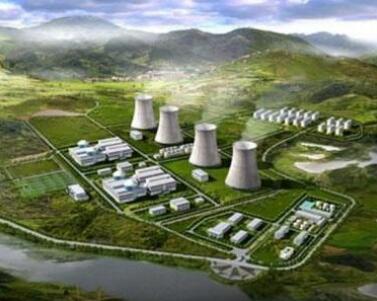
Systems and equipment that convert nuclear energy released by nuclear fission (or fusion) into electrical energy are often referred to as nuclear power plants. Different types of nuclear reactors, nuclear power plant systems and equipment are also different. The working principle of the nuclear power plant is introduced below by taking a pressurized water reactor (the main reactor type of a nuclear power plant) as an example. The pressurized water reactor nuclear power plant is mainly composed of nuclear reactor, primary loop system, secondary loop system and other auxiliary systems and equipment. The principle of the process is shown in the figure below.
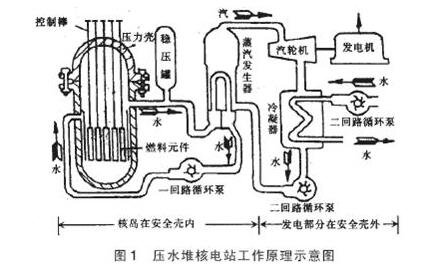
The primary loop system is a thermal energy device that converts fission energy into water vapor. It consists of a reactor, a primary circuit circulating pump (ie, a main pump), a surge tank (ie, a regulator), a steam generator, and corresponding piping. The nuclear energy generated in the nuclear reactor increases the temperature of the core heating. The high temperature and high pressure cooling water flows into the reactor core under the driving of the main circulation pump to bring the heat in the core to the steam generator. The steam generator then transfers the heat to the feed water in the secondary circuit circulation system, so that the feed water is heated to become high pressure steam, and the exothermic cooling water is again returned to the core. This continually circulates back and forth to form a closed loop.
The pressure of the primary circuit is regulated by a surge tank. The primary circuit system of the modern high-power PWR nuclear power plant generally has 2-4 closed closed-loop circuits, each of which is connected by a main circulation pump and a steam generator connected to the corresponding pipeline. In order to ensure safety, the main equipment of the entire primary loop system is installed in a vertical cylindrical spherical roof sealed building (commonly called nuclear power plant containment), which is a large building structure with prestressed concrete lining steel. It can withstand certain pressures and prevent the penetration and spread of radioactive materials.
The secondary circuit circulation system is composed of a steam turbine, a generator, a condenser, a secondary circuit circulating pump and the like. The feed water of the steam generator in the second circuit absorbs the heat from the first circuit and turns it into high-pressure steam, and then pushes the steam turbine to drive the generator to generate electricity. After the work, the exhaust gas is cooled in the condenser and condensed into water, and then sent to the heater by the feed water pump to be heated and then returned to the steam generator, and then turned into high-pressure steam to drive the steam turbine generator to generate electricity, thus forming the second Closed loops. The secondary circuit system equipment is installed in the steam turbine generator building, and the primary circuit and the second circuit are connected to the steam generator through the main steam pipe.
The secondary circuit of a nuclear power plant is similar to the power circuit of a normal thermal power plant. The steam generator and the primary circuit are equivalent to the boiler of a thermal power station. Since the primary loop system of the reactor often carries a certain dose of radioactivity, the coolant from the reactor is generally not suitable for direct feeding into the steam turbine. Otherwise, the operation and maintenance of the conventional unit will be complicated. Therefore, the nuclear power plant generally has more power circuits than the thermal power station. . In addition, the nuclear power plant is also equipped with auxiliary system workshops, power plant circulating water pump houses, power transmission and distribution plants, and radioactive waste storage and treatment facilities to maintain the normal operation of the nuclear power plant and prevent accidents.
Advantages and disadvantages of nuclear power generationadvantage:
1. Nuclear power generation does not emit a huge amount of pollutants into the atmosphere like fossil fuel power generation, so nuclear power generation will not cause air pollution.
2. Nuclear power generation does not produce carbon dioxide that aggravates the global warming effect.
3. Uranium fuel used in nuclear power generation has no other use than power generation.
4. The energy density of nuclear fuel is several million times higher than that of fossil fuels. Therefore, the fuel used in nuclear power plants is small in size and convenient for transportation and storage. A 1000 megawatt nuclear power plant requires only 30 metric tons of uranium fuel per year. The plane can be completed by a voyage.
5. Among the costs of nuclear power generation, the proportion of fuel costs is relatively low, and the cost of nuclear power generation is less susceptible to the international economic situation, so the cost of power generation is more stable than other power generation methods.
Disadvantages:
1. Nuclear power plants produce high-level and low-level radioactive waste, or used nuclear fuel. Although they are small in size, they must be treated with caution because of their radiation, and they face considerable political troubles.
2. The nuclear power plant has low thermal efficiency, so it emits more waste heat into the environment than the general fossil fuel power plant, so the thermal pollution of the nuclear power plant is more serious.
3. The investment cost of nuclear power plants is too large, and the financial risks of power companies are high.
4. Nuclear power plants are less suitable for peak-loading and off-peak operation.
5. The construction of nuclear power plants is more likely to trigger political differences.
6. There are a large amount of radioactive materials in the reactor of a nuclear power plant. If it is released into the external environment during an accident, it will cause harm to the ecology and the public.
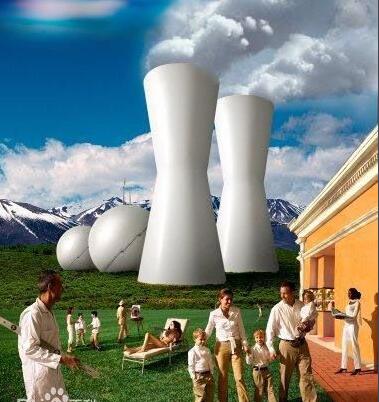
A nuclear power reactor is a special type of boiler, which is also known as an atomic reactor. The modern reactor, viewed from the outside, is a cylindrical or spherical building with a vertical spherical top. This is called a nuclear island. As for the power generation part (also known as the conventional island), both the nuclear power plant and the inflammatory power plant use steam expansion to work, driving the steam turbine to rotate and driving the generator to generate electricity. The main difference between nuclear power plants and thermal power plants is the steam supply system. Thermal power plants rely on the chemical energy released by burning fossil fuels to produce steam. Nuclear power plants rely on nuclear fuel fission reactions to release nuclear energy to produce steam.
There are many types of nuclear power reactors, but the technologies are relatively mature and put into commercial operation. There are mainly the following types of reactors.
(1) Pressurized water reactor: It is a kind of nuclear power reactor first used in ships. It uses water as coolant and neutron moderator. It has compact structure, good economy and good safety, except for several safety. In addition to the barrier, there is a series of depth protection measures. From the perspective of safety psychology, this is probably an important factor in the selection of pressurized water reactors in many countries. It is currently the main reactor type of nuclear power plants around the world. Of the 11 nuclear power plants built and under construction in China, 9 are PWR nuclear power units.
The third generation of advanced pressurized water reactor technology is headed by ERF of AREVA in Europe and AP1000 technology of WESTINGHOUSE of the United States. These two companies also hold the top two positions in the world nuclear power industry.
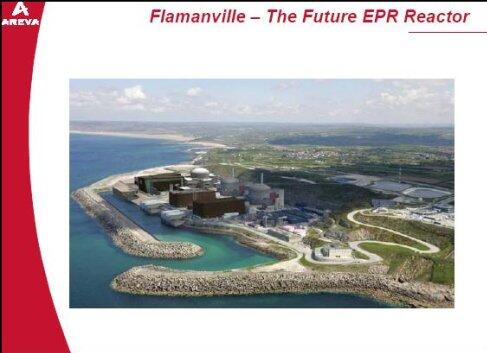
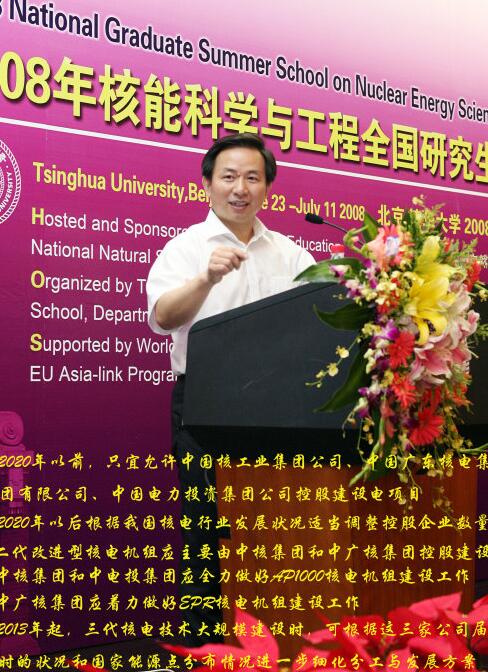
Leader's Speech - Li Ganjie, Vice Minister of Environmental Protection and Director of the Nuclear Security Bureau
(2) Boiling water reactor: It is derived on the basis of pressurized water reactor and simplified. By reducing the pressure, the water directly generates steam after the core boils, and is directly used to drive the steam turbine to generate electricity through the separation of steam and water. Although there is only one circuit in the boiling water reactor, the system structure is relatively simple, and the equipment manufacturing is also difficult. However, the steam is radioactive, and the steam turbine and the main steam pipeline must have corresponding protective measures.
The boiling water reactor is mainly made by GE and HITACHI, and China has not yet introduced it.
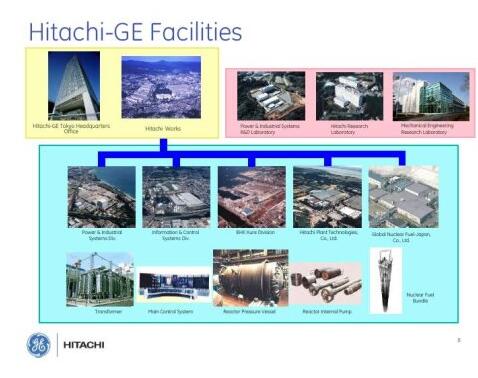
(3) Heavy water reactor: using heavy water (water formed by heavy hydrogen and oxygen) as a coolant and neutron moderator, it can directly use natural uranium or slightly concentrated metal uranium as fuel, without the need for large-scale manufacturing equipment, but The reactor is bulky and expensive. Two of the 11 nuclear power units that have been built and under construction in mainland China are heavy-water reactor nuclear power units imported from Canada.
Heavy water reactor is also the CANDU heap of the Canadian Atomic Energy Corporation.
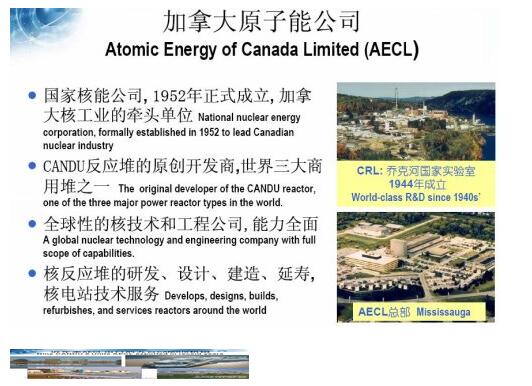
(4) Gas-cooled reactor: Gas (carbon dioxide, helium, etc.) is used as a coolant. It was once the main type of reactor in Britain and France. Due to poor gas heat transfer capacity, some problems remain to be solved, and its development is limited. limits. The high-temperature gas-cooled reactor currently under development has high thermal efficiency and good safety and is likely to be developed.
(5) Pressure tube type graphite boiling water reactor: The power station is a pressure tube type graphite boiling water reactor. This type of stacking equipment is simple to manufacture and can be stacked and unloaded. However, the loop system is complicated, and the installation and maintenance are difficult, especially the pressure tube is The single layer has no pressure shell, so once the reactor is damaged, the radioactive material leaks directly and in large quantities into the environment. On April 26, 1986, after a serious accident at the Chernobyl nuclear power plant in the former Soviet Union, the development plan for this type of pile had been cancelled.
(6) Fast neutron breeder reactor: The fast neutron breeder has no moderator, using fast neutrons (average neutron energy of more than 0.5Mev, much larger than the average electron energy of the thermal neutron reactor is about 0.07Mev) Fission, not only the secondary neutrons released after each uranium-235 nuclear fission, but also the loss of fast neutrons. Therefore, after the initiation of fission, these fast neutrons have more surplus, which can be used to make the non-fissible uranium-238 into a fissile high-quality fuel é’š-239, so that the nuclear fuel burns more. The PWR is a nuclear fuel that consumes uranium-235 to produce electricity; while the fast neutron breeder reactor produces both electricity and nuclear fuel é’š-239.
Since the fast neutron breeder reactor utilizes uranium-238, which is the main component of natural uranium, into é’š-239, the utilization of uranium in the fast neutron breeder reactor is 140 times higher than that of the current pressurized water reactor. . The tailings of enriched uranium that cannot be used in pressurized water reactors, as well as the nuclear fuel discharged from pressurized water reactors, can be utilized in fast breeder reactors. Moreover, the low-grade uranium mines that are currently not available for mining also have the value of economic exploitation, which can fully meet the energy needs of humans for hundreds of years. America and so on! Among the new energy development plans determined by the country, the fast neutron breeder reactor is a key type of development. In addition to the current sodium-cooled fast neutron breeder reactor, the gas-cooled fast neutron breeder reactor and the lead-cooled fast neutron breeder reactor are also being developed.
The reactor type of nuclear power plants can be divided into power reactors, production reactors, research reactors, special purpose reactors, etc. according to the coolant and moderator, and can be divided into light water reactor, heavy water reactor and graphite air cooling. Heap, graphite water cooled reactor, high temperature gas cooled reactor, fast neutron breeder reactor, etc. (see Figure 2)
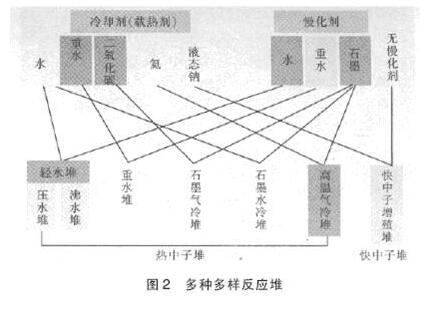
At present, nuclear power plants account for the largest proportion of pressurized water reactors and boiling water reactors, accounting for 60% and 20% respectively, heavy water reactors accounting for about 10%, and other reactors accounting for 10%.
In addition to the nuclear crack reactor mentioned above, the world is investing a large amount of manpower and material resources to develop nuclear fusion reactors. When two light nuclei are combined into one heavier nuclei, energy is also released. We call this combination a fusion, and the energy released is called fusion energy. A device that is controlled under artificial control becomes a controlled fusion, and a device that releases energy in the case of controlled fusion is called a fusion reactor. Fusion energy is a safer, cleaner, more economical energy source, and it is possible to achieve direct energy conversion with extremely high thermal efficiency. Not only do light-nuclear fusions release more energy per kilogram of fusion fuel, but more importantly, the amount of fusion fuel on the earth is much richer than fission fuel reserves. The energy released by æ°˜ and æ°š fusion is four times that of the same quality uranium-235 fission. Moreover, there is an inexhaustible ripple in the ocean. The content of strontium in seawater is 34 mg/L, and the total amount of strontium on the earth is as much as 40 trillion tons, which can be used by humans for more than 5 billion years.æ°šCan be produced with lithium (lithium-6), and lithium is also abundant in nature, so fusion energy generation is a more ideal energy source. International nuclear fusion experts are optimistic that the second half of this century can achieve commercial power generation in fusion reactors.
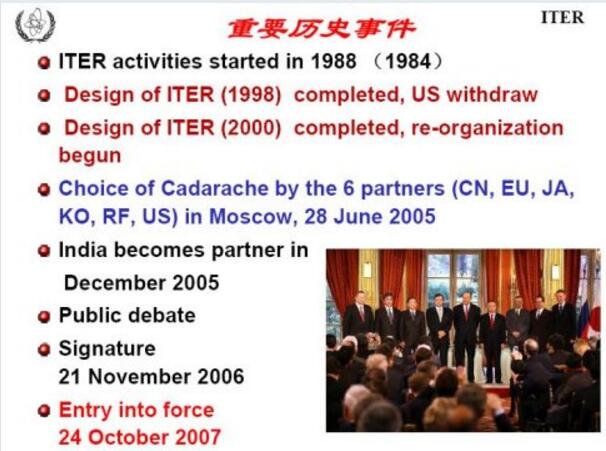
We are manufacturer of Solar Inverter in China,OEM and ODM are acceptable, if you want to buy Off Grid Hybrid Inverter,Solar Power Inverter, please contact us.

Solar Power Inverter,Solar Inverter,Hybrid Inverter,Solaredge Inverter,Solar Power Inverter
suzhou whaylan new energy technology co., ltd , https://www.whaylan.com